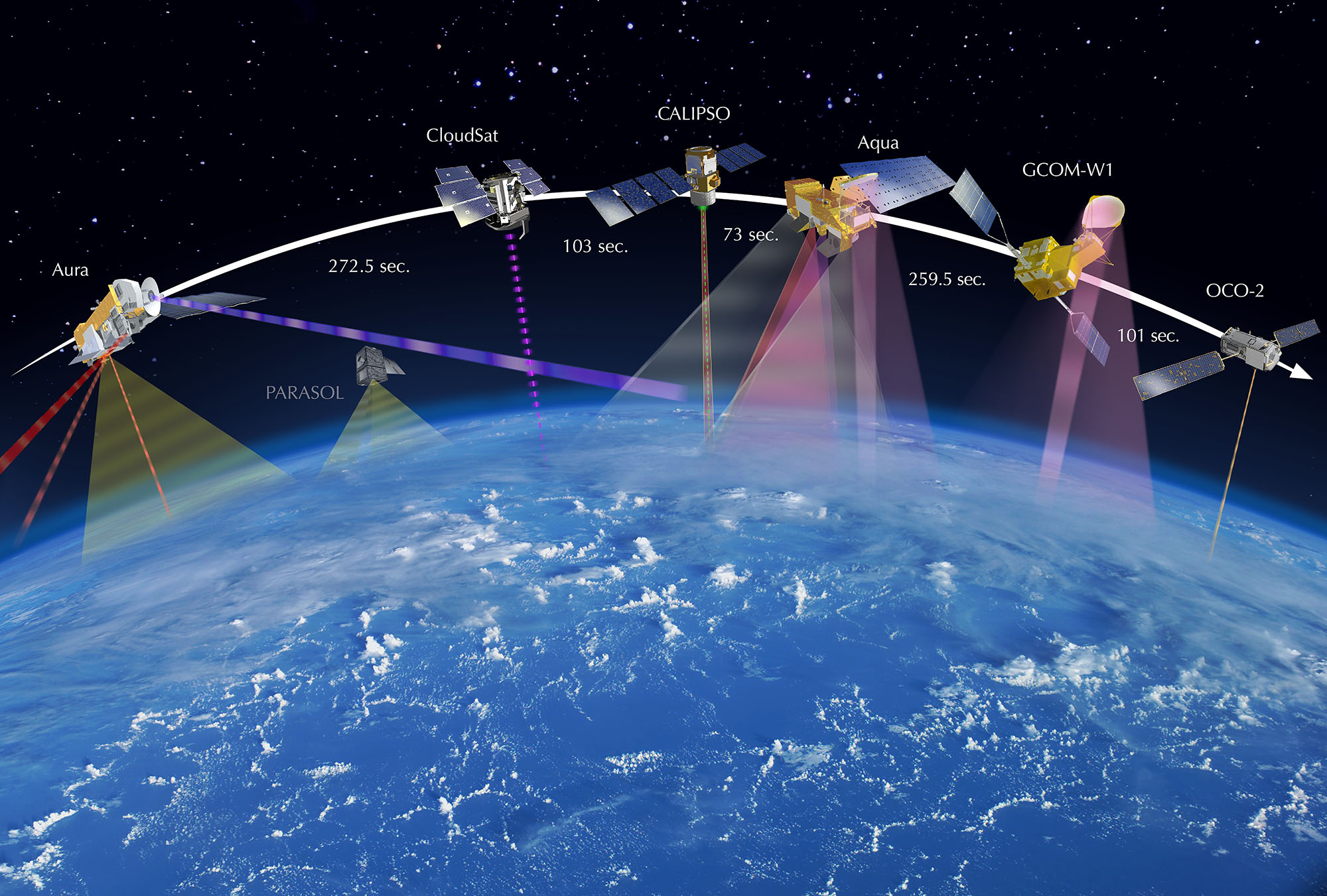"There will be a lot of media space allocated to covering outer space...Meanwhile we also expect coverage about political and legal issues of space as well as articles about things that just a few years ago would have flown under the radar (we've really been trying not to make space puns) such as the growing awareness that too many satellites are causing a traffic jam in space. This space jam began to get recognition as a potential problem in space in 2019 but we think it will get more recognition in 2020. The risk of collisions among satellites is a problem."
On Jan. 28, USA Today wrote: "Heads up: Two satellites might collide in space 559 miles above Pittsburgh."
By NASA JPL - http://oco.jpl.nasa.gov/galleries/galleryspacecraft/, Public Domain, https://commons.wikimedia.org/w/index.php?curid=33645603
Update: Since we first published this blog, The Atlantic published an article, "The Night Sky Will Never Be the Same: Elon Musk’s plan for worldwide internet has sent bright artificial, lights streaking through the dark" that also validates our prediction. The Atlantic looks at Starlink, described as "a floating scaffold" that Musk "hopes will someday provide high-speed internet to every part of the world." The problem:
"These satellites have turned out to be far more reflective than anyone, even SpaceX engineers, expected. Before Starlink, there were about 200 objects in orbit around Earth that could be seen with the unaided eye. In less than a year, SpaceX has added another 240. 'These are brighter than probably 99 percent of existing objects in Earth orbit right now,' says Pat Seitzer, a professor emeritus at the University of Michigan who studies orbital debris."You might say, so big deal about this prediction? What can we do about this problem. We think it's interesting for several reasons:
- This was a topic that was mostly ignored a few years ago. In Feb. 1, 2017, Popular Science published an article about space junk, "If Earth's orbit is so crowded, why don't we see space junk in photos of the Earth?" The article acknowledge a problem with space junk but not the aspect of collisions, and that was just three years ago.
- There seems to be more interest in space (and not because of the U.S. Space Force). Awareness of space junk is probably a good thing. What we really need is a solution. There could be a business in decluttering old, useless satellites still in orbit.
- From a media perspective, one article may reinforce another reporter filing another story. This is how media bandwagons start, and it may encourage governments and businesses to find a way to remove space junk.

No comments:
Post a Comment